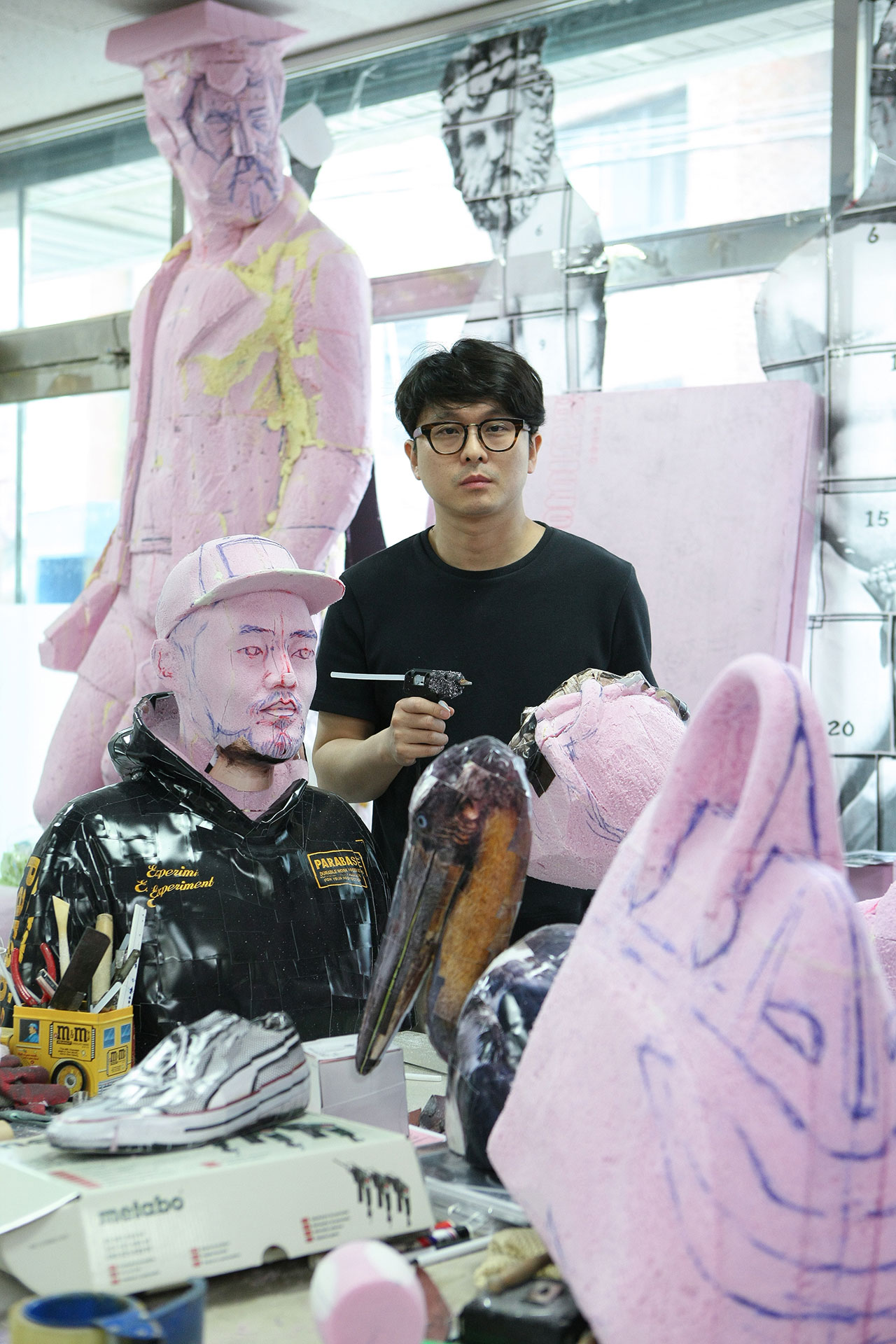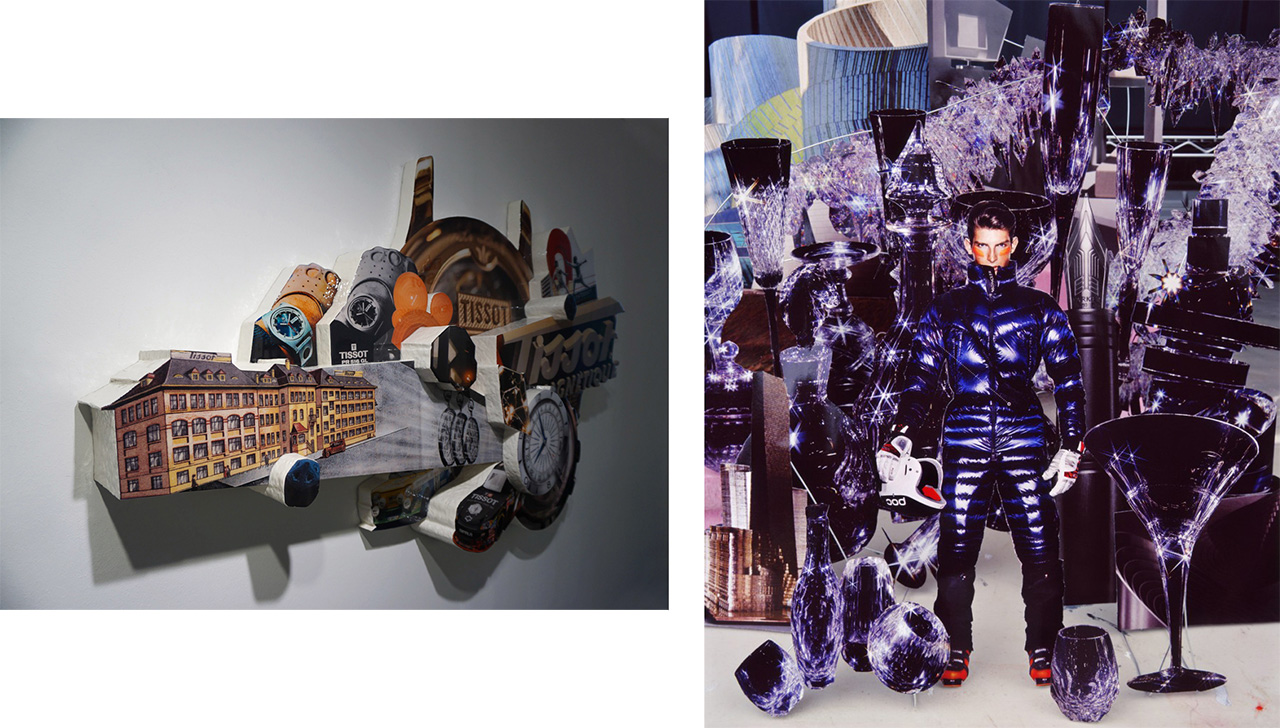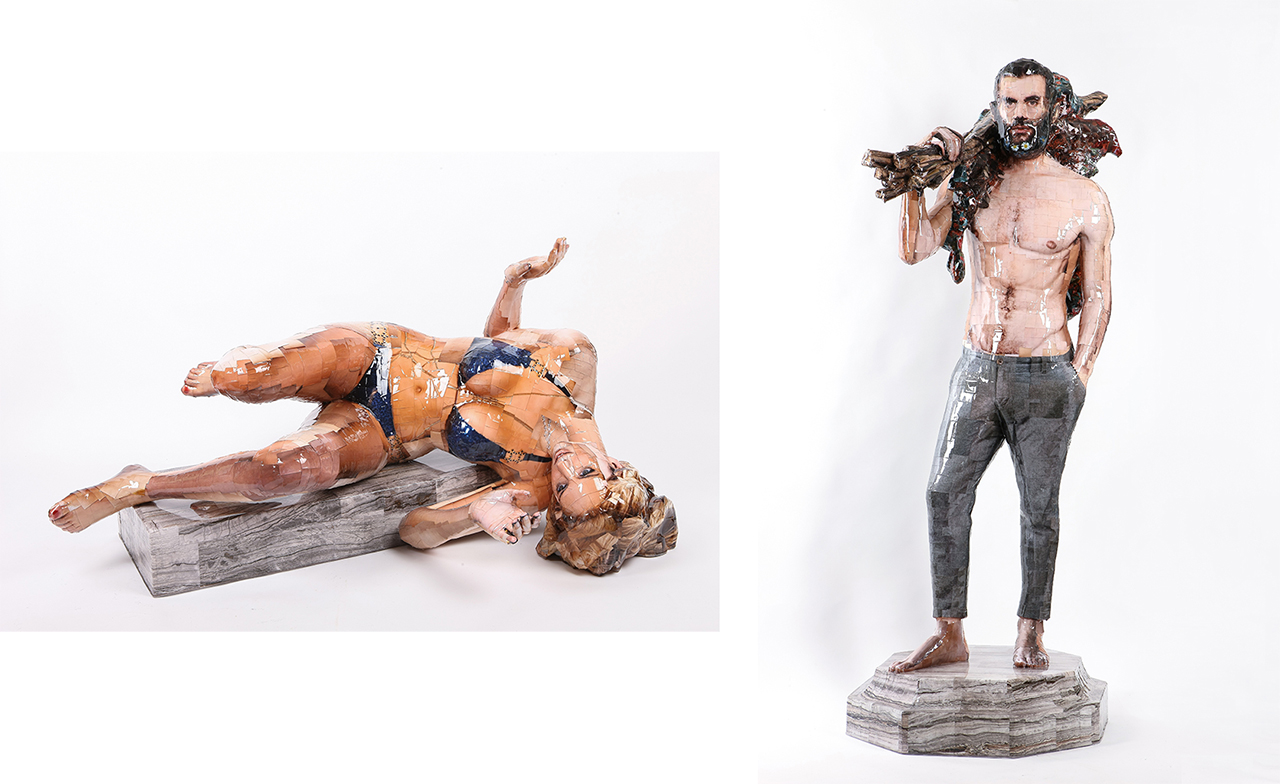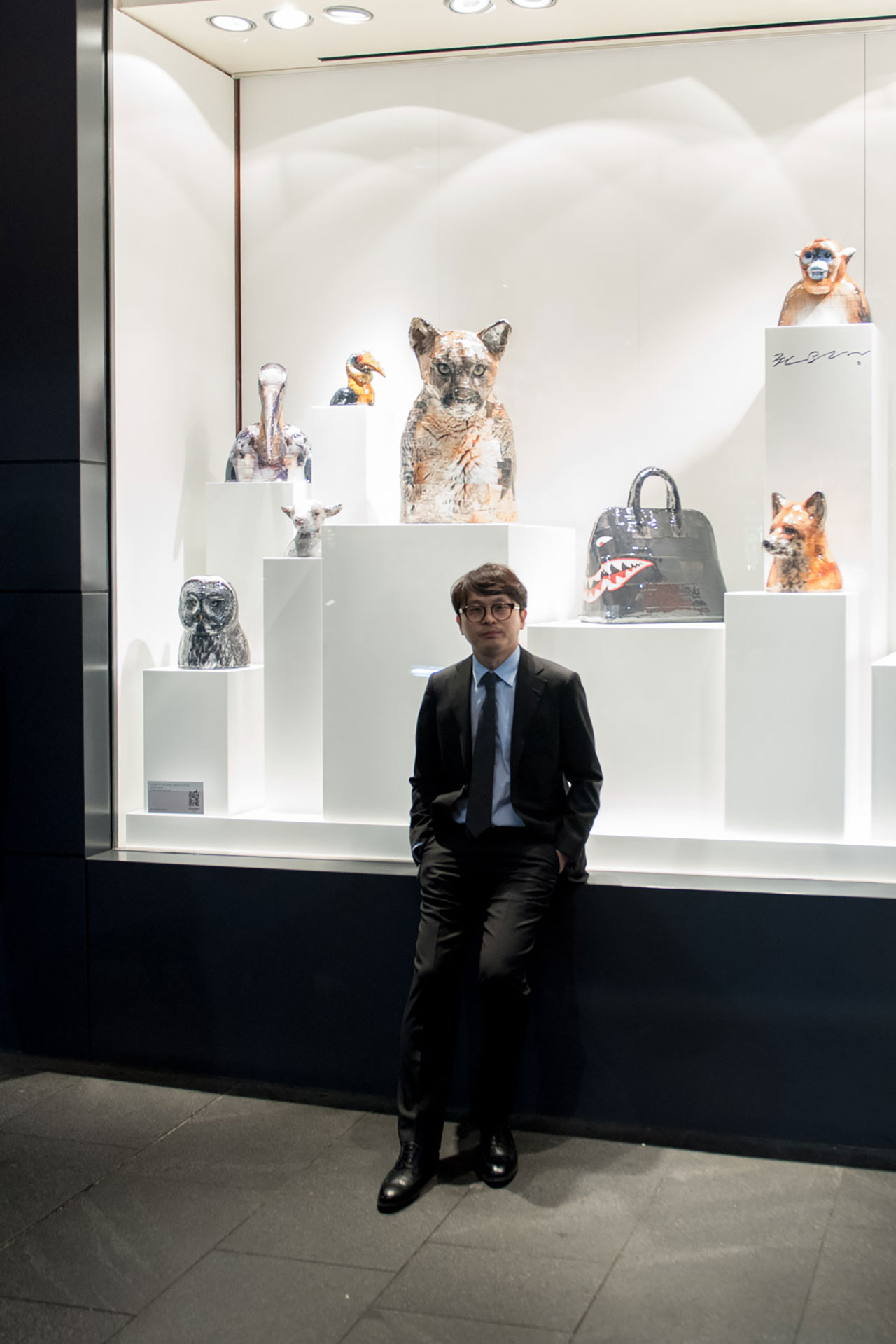News feed

Credit: Supplied courtesy of Hermès
“It seems that many people have a preconception that my artwork is commenting on something,” says Osang Gwon, perched on the edge of a pink velvet banquette at Sydney’s QT Hotel.
With the aid of a translator, the South Korean artist is describing how he would prefer his audiences view his artworks as another part of the densely populated landscape of contemporary culture. Something just “like any other [part of the] scenery”, rather than occupying the innovative new realm where you’ll really find them: in the liminal space between sculpture and photography, perhaps unlike anything you’ve ever seen before. The pieces Gwon creates are neither here nor there, photography or sculpture, but instead straddle the divide – leaving audiences to question whether boundaries between the two art forms should even exist in the first place.
The works in question aren’t criticisms of the homogeneity of mass, luxury, youth and popular culture, as I’d fancifully ventured to Gwon. They’re just sculptures as elements of the scenery, and Gwon would like you to look at them as you would anything else.
“When we go and travel and see beautiful sceneries, none of us think, ‘Oh what is the meaning of this beautiful scenery’. So just like viewing [landscapes], if my audience just look at my artwork and initiate their imagination then I think I have already achieved my goals.”

At left, Tissot, 2015, C-print, Mixed media, 214x130x22cm, and at right, 2011 January, 2012, Lightjet print, wood frame, 217.6x172cm
Credit: Osang Gwon
Given Gwon’s medium and subject matter, it’s a fair assumption that there might be some kind of critique or comment on a global culture that, to paraphrase the artist, means we’re all living very similar looking lifestyles in 2016. Now 42, the Seoul-based artist has spent the better part of two decades exploring variations in the themes of his own creation, embodied most famously the photo-sculpture composites for which he has become internationally renowned and which can be distilled into the following categories.
First, there’s Deodorant Type (1998 – present), wherein Gwon takes thousands of photographs of his subject from every possible angle, collaging and moulding them onto a compressed Styrofoam sculpture. The result is uncanny. Proportion, 3D mass and 2D photography give the sculptures some, though not a great deal, of verisimilitude (a high gloss coating takes care of the rest). In appearance, it’s almost as if they’re contemporary cadavers mummified in the pastiched pages of magazines instead of peat.

At left, River, 2015, C-print, Mixed media, 145x100x76cm, and at right, Westwood, 2015, C-print, Mixed media, 215x110x63cm
Credit: Osang Gwon
There’s The Flat series (2011 – 2014), where the images of contemporary culture are composed, flattened through photography, and made three-dimensional again. There’s also <Masspatterns> (2013), a pastiche of different images, figures, animals and objects arranged in a haphazard, shrine-like fashion. New Structure (2014 – present) magnifies the composite parts of an object beyond reasonable scale, produces them on a flat surface and restructures them in three dimensions and Relief (2013 – 2015) involves the layering of images on images taken from magazines like Wallpaper* to create a raised photo-sculpture out of the repetitive gesture.
Then there is The Sculpture (2005 – 2015) series, which has most infamously included to-scale replicas of Lamborghinis rendered either in bronze or acrylic painted clay. Those works in particular brought the artist as close to the brink of failure as any.
“If someone looked at that from a commercial point of view, it was a failure,” says Gwon. “I was about 30-years-old and the value of that artwork, the breaking point to recover the cost of investment, was about $2 billion Korean won [currency].
“The artwork had butterflies embedded in it. At the time, I already knew it would be a failure commercially but I thought maybe the Middle Eastern princes who were interested in cars and artwork together would buy [the piece]… Ten years has passed since then. I created it at the time using Internet search because I couldn’t see the real thing but [it had] a positive impact on my photographic work and I believe that it will continuously contribute positively to my future work. So that was a failure commercially, but conceptually, I think it can be viewed as a success.”

At left, New Structure 4 Prism & Macallan, 2014, Inkjet print, Aluminum, 275(h)x 197x 316cm and right, The Sculpture 3, 2005-2015, Acrylic on Stoneclay, Resin, 120(h)x210x435cm
Credit: Osang Gwon
Borrowing images from the Internet now forms a large part of Gwon’s practice, which began in earnest during his years studying sculpture formally at the Hongik University in Seoul, South Korea. Rather embarrassingly, he says, his ambition to be remembered as a great sculptor predates those years spent studying (Gwon graduated with an MFA in 2004) when he began to develop the early prototypes for what would come to be known as Deodorant Type. His interest in the medium developed much earlier through adolescent exposure to the works of 20th century French sculptor Auguste Rodin and American multi-disciplinarian Chris Bruden. Through magazines, Gwon began to cultivate an interest in the art form, before matriculating and broadening his interests to include photography – a decision that at the time was met with considerable bemusement on the part of his family.
“Generally speaking, in Korea when men become involved or pursue the field of art, parents will oppose. From my parents’ perspective, when I told my parents that I would go to an artistic high school, my father just said, ‘Okay.’ In my family’s history there are no artists, so my parents thought I would only study for one or three years and quit [laughs]. Now my parents are the best [supporters of] my work.”

A Family Photo of 440 Pieces Composed of Tenacity, 1998-1999, C-print, mixed media, 120x130x60cm
Credit: Osang Gwon
Gwon’s first major work, A Family Photo of 440 Pieces Composed of Tenacity, took his parents as its subject matter. In the piece, his parents sit side-by-side and hand-in-hand, their likeness recreated in the first rudimentary attempts at the Deodorant Type technique that would become his signature – the composite photographs resembling overblown pixels, despite the fact that Gwon’s earliest works were composed of Type-C prints.
“When I first began this work, I [used] film. Now [I shoot] digital. Previously, I took the photos myself, however, nowadays I search for photos on the Internet and I use them. I think that the fact that I’m using material from the Internet is a reflection of how our lifestyle in 2016 is similar to many other people.”
The series itself doesn’t take its name from deodorant’s obfuscating properties. Instead, it hints at the transformation that takes place when Gwon’s 2D photographs take on challenging 3D forms. Originally, Gwon says he used photographs “of superficial things like family photos or identification photos. And then I used a lot of photos [that] appeared in magazine advertisements.” It was only when Gwon started to pursue those images that he clocked their resemblance to the poses of the classical sculptures with which he first felt in love. He now aims to reflect a balance between the two opposing schools of thought – classicism and consumerism – into his contemporary works.

Korean model Sung Jin Park poses alongside his likeness at the Hermès Sydney store
Credit: Supplied courtesy of Hermès
Nowhere else is this more apparent than in the works commissioned of Gwon by Hermès, for whom he has spent a year creating The Art of The Image_New Sculpture, a series of works celebrating the label’s theme for 2016, Nature at Full Gallop. The resulting pieces expand on the Deodorant Type series, with subjects ranging from animals (a white tiger, a fox, a snow leopard) to Korean national treasures, pieces from the venerable French fashion house’s ready-to-wear collections worn by Korean male model Sung Jin Park (known on Instagram as Teriyaki Papi) and accessories, namely the smiling Bolide 45 Shark bag taken from the Autumn/Winter 2016 collection.
As an artist who came of age during the boom and bust of the Korean art world, Gwon has been labelled in the past as ‘the artist with a lot of talent but no luck’. At the turn of the millennium, Gwon entered the local art scene at a time of considerable prosperity, when the demand for new artists’ work was high and the globalised Asian art market was enjoying a similar upswing. However, in correlation with the global recession of 2008, the local art market suffered a similar crash from which it has been unable to fully recover.
“Even though the current situation is not very good, I believe it’s a good time for new forms of art to be introduced,” says Gwon. “I am an artist. It’s my job to carry on.”

Artist Osang Gwon poses alongside his work as seen in situ at the Hermès Sydney store
Credit: Supplied courtesy of Hermès
In light of his collaboration with Hermès in Australia, his residencies throughout Asia and exhibitions throughout Europe, America and the UK, I ask Gwon if he feels his luck has since changed as he approaches the end of his second decade as a working artist – in itself a sure sign of viability and success.
“You see, it is a relief because some people I know who were lucky in the early stages are no longer in the scene. I entered the art world at a young age, and there were times when my name was not recognised by anybody, but at the same time I never actually experienced a very big boom either, [so] it seems that my luck keeps on improving.
“I’m aware that behind the superficial appearance of success can be an element of misfortune. There’s an idea embedded into people who went to art school [that success] seems to be very splendid and luxurious. I believe that success is to live a peaceful and happy life. Not to live like Van Gogh, but like Claude Monet.”
The Art of The Image_New Sculpture is available to be viewed in the windows of the Hermès Sydney store at 135 elizabeth street until November 25.










